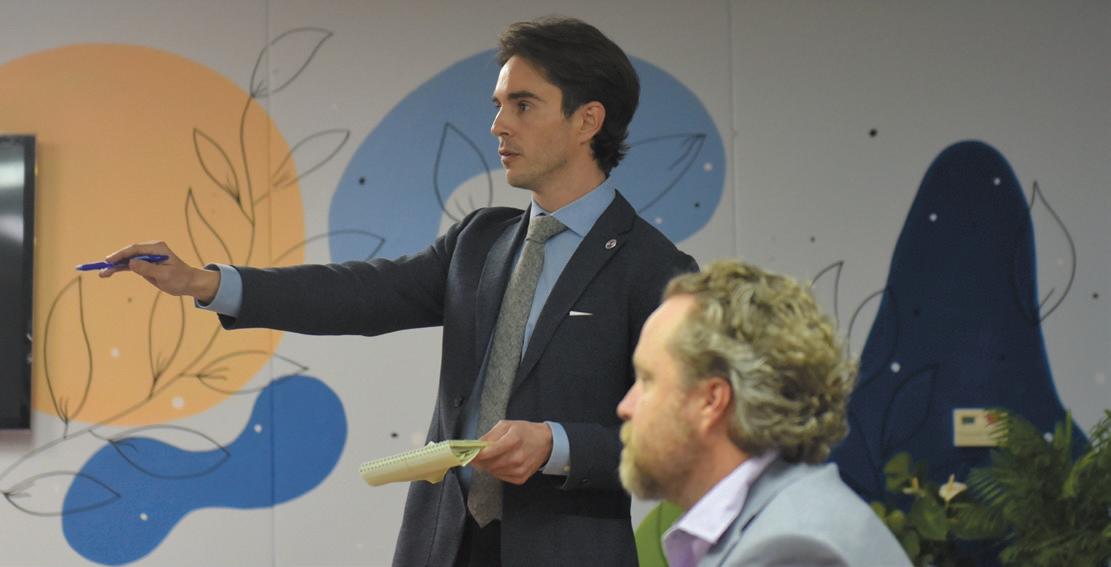
3 minute read
City holds multi-agency earthquake preparedness exercise on Jan.19
Just six days after the exercise, a 4.2 earthquake and several aftershocks strike o the coast of Malibu
By SAMANTHA BRAVO Of The Malibu Times
The City of Malibu conducted a multi-agency earthquake exercise on Jan. 19 at City Hall. e scenario was based on “ e Big One,” a devastating 7.8 earthquake that seismic experts believe will eventually strike on the San Andreas Fault. e exercise looked at impacts, responses, needs, challenges, and procedures that all of the agencies responding to a massive earthquake would experience in Malibu.
“If a massive earthquake strikes the Los Angeles County area, Malibu could be isolated and without water, electricity, communications and help from responding agencies for days, so we have to do everything we can to be prepared to be self-sufcient,” Mayor Bruce Silverstein said in a press release. “It is crucial that community members, business owners, students, employees, and organizations in Malibu work on their emergency plans and supplies so we can all be ready and resilient.” e scenario was based on the Great Shakeout Scenario developed in 2008 by Dr. Lucy Jones of the U.S. Geological Survey and a group of over 300 scientists, engineers, and other experts. A 7.8 earthquake would cause massive, widespread damage across Southern California that would be far worse than that of the 6.7 Northridge earthquake in 1994. e 7.8 earthquake scenario projects more than 1,800 deaths, 50,000 injuries, $200 billion in damage (in 2008 dollars), and severe, long-lasting disruption to all sectors of the economy and communities. students on their speeches.
Just days after the exercise, on Jan. 25, a 4.2 earthquake and several aftershocks struck o the coast of Malibu. While no damage was reported, the city was in immediate contact with the County O ce of Emergency Management, coordinated with county agencies to conduct damage assessments, and developed public messaging about the potential hazard of falling rocks in canyon roads in light of several rockslides that occurred during the recent rains.
One of the main goals was to ensure that partner agencies were familiar with, in contact with, and collaborating with each other and the city, and are familiar with Malibu’s speci c hazards and community characteristics.
City sta and public safety commissioners were joined by participating agencies, including the Los Angeles County Sheri ’s, Fire and Public Works departments, CHP, Caltrans, LA County Metro, Pepperdine University, HRL, Malibu Community Emergency Response Team (CERT), West Basin Municipal Water District, Socal Gas Company, Southern California Edison, SM-MUSD, cell phone and Internet service providers, and others.
While a major earthquake on the San Andreas fault would not be expected to cause extensive structural damage in Malibu, the community would likely experience signi cant infrastructure disruption, loss of electricity, water, gas, phone, and internet service from damage within and outside the city, and the loss of road access in and out of Malibu.
A key takeaway of the exercise was the need for the city to increase e orts to engage the full community and incorporate all community resources into the city’s Emergency Operations Plan.
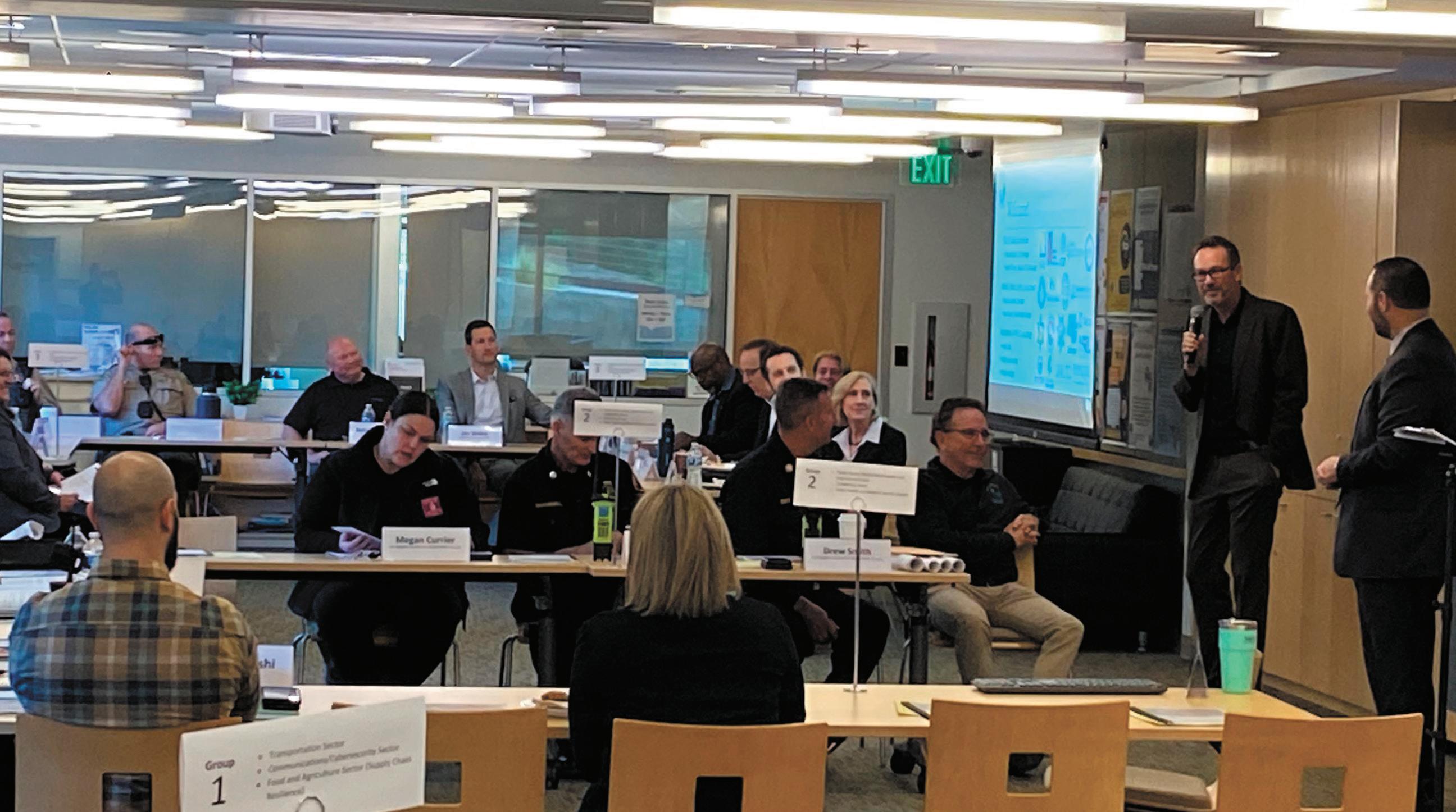
Information collected during the exercise will be used to create an earthquake playbook to help guide the city in the rst days of a major, regional disaster, and will be incorporated into the update of the Emergency Operations Plan this year.
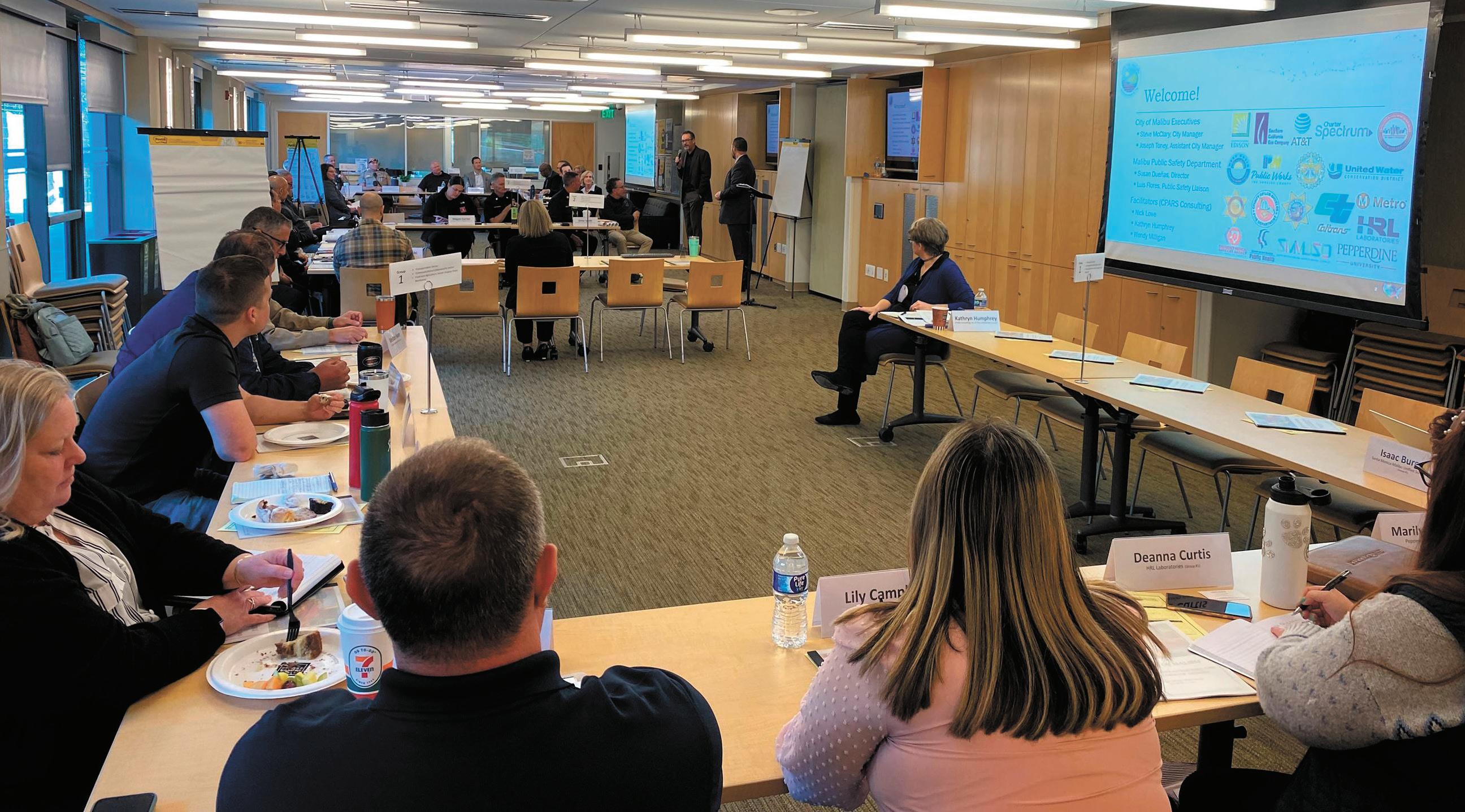
For guidance on how to get prepared for earthquakes, visit Ready.LACounty. gov/Earthquakes.
“Each of you really brought yourselves and it was delightful,” Rouse said. “You [all] really uplifted us.”
Cyr attended the event and thanked the organizers and students for their empowering speeches.
“ ank you truly for your courage, your vulnerability, and your commitment to improving your community in each of your own unique way,” Cyr said. “ e time to lead is now, whatever you’re working on, give it your best, give it your all, be proud of the work no matter the outcome and continue leading today, keep it going, it’s truly inspiring hearing all your stories.”
After speeches, the judges took time to thank each student and announced the winner, Anthony.
“ is is most special and important program that we run here because it highlights the individual stories, achievements, their future goals and I’m happy to keep on doing it,” Executive Director of the Boys & Girls Club Malibu Kasey Earnest said.
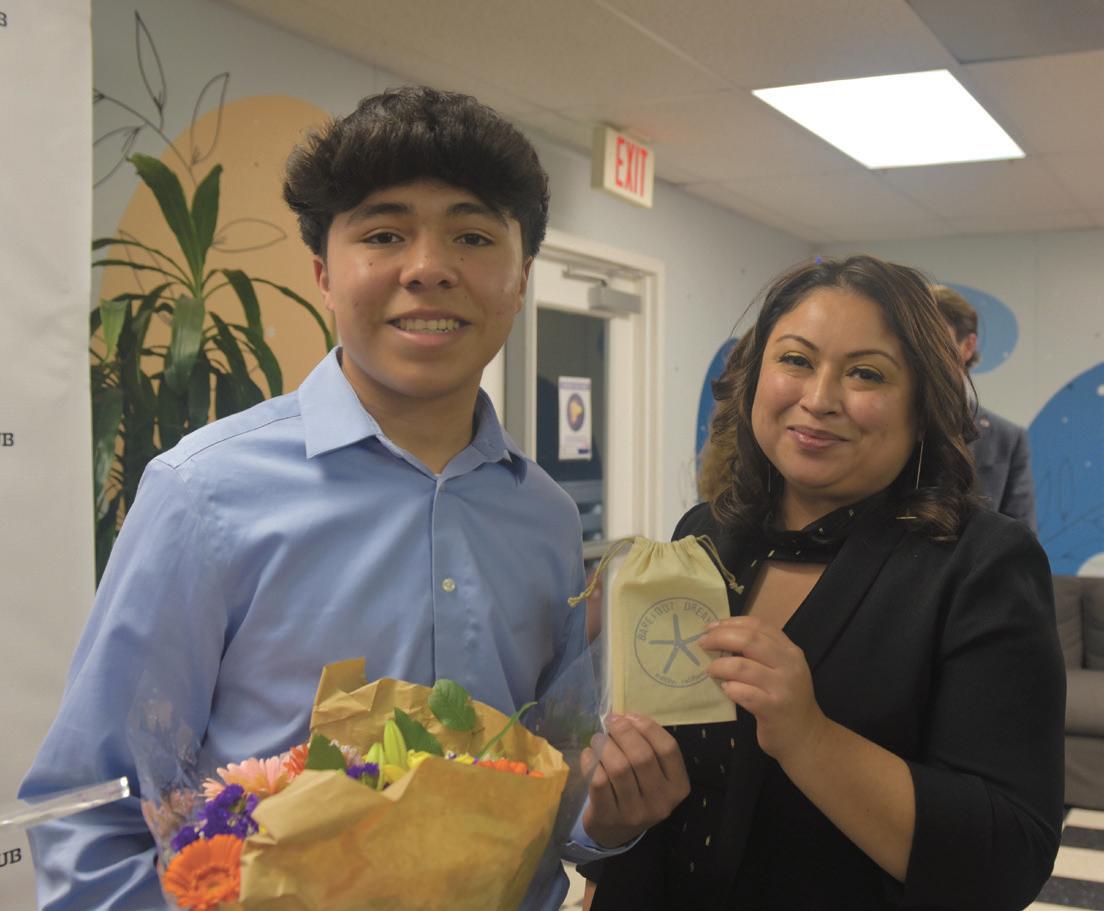
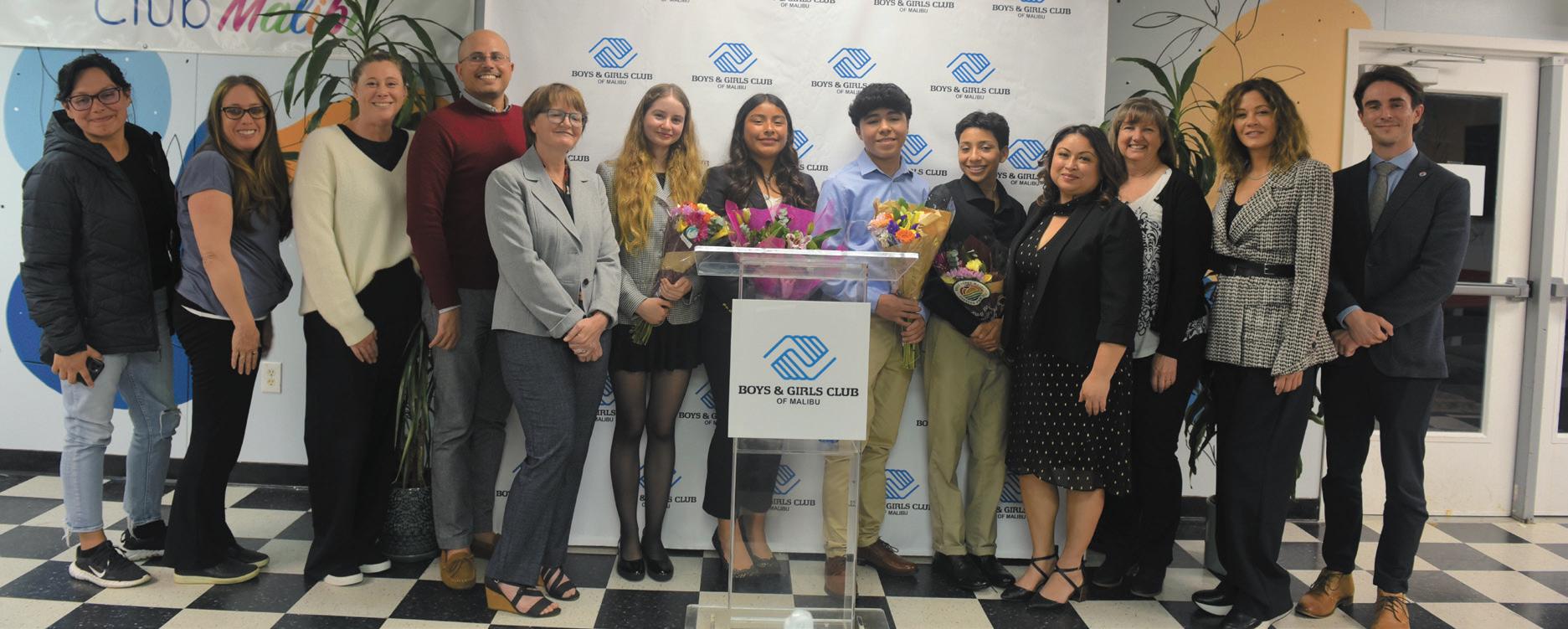
Established in 1947, Youth of the Year is BGCA’s premier recognition program for club members, promoting service to club, community and family; academic success; strong moral character; life goals; and poise and public speaking ability. e program is most e ective when used as a year-round tool for fostering young people’s character, personal growth and leadership qualities. Local Clubs recognize members ages 14 to 18 as Youth of the Month winners and select a Youth of the Year, who then participates in state competitions. State winners each receive a $1,000 scholarship and participate in regional competitions. Five regional winners each receive a $10,000 scholarship and compete on the national level. e National Youth of the Year receives up to an additional $50,000 scholarship and is installed by the President of the United States.











